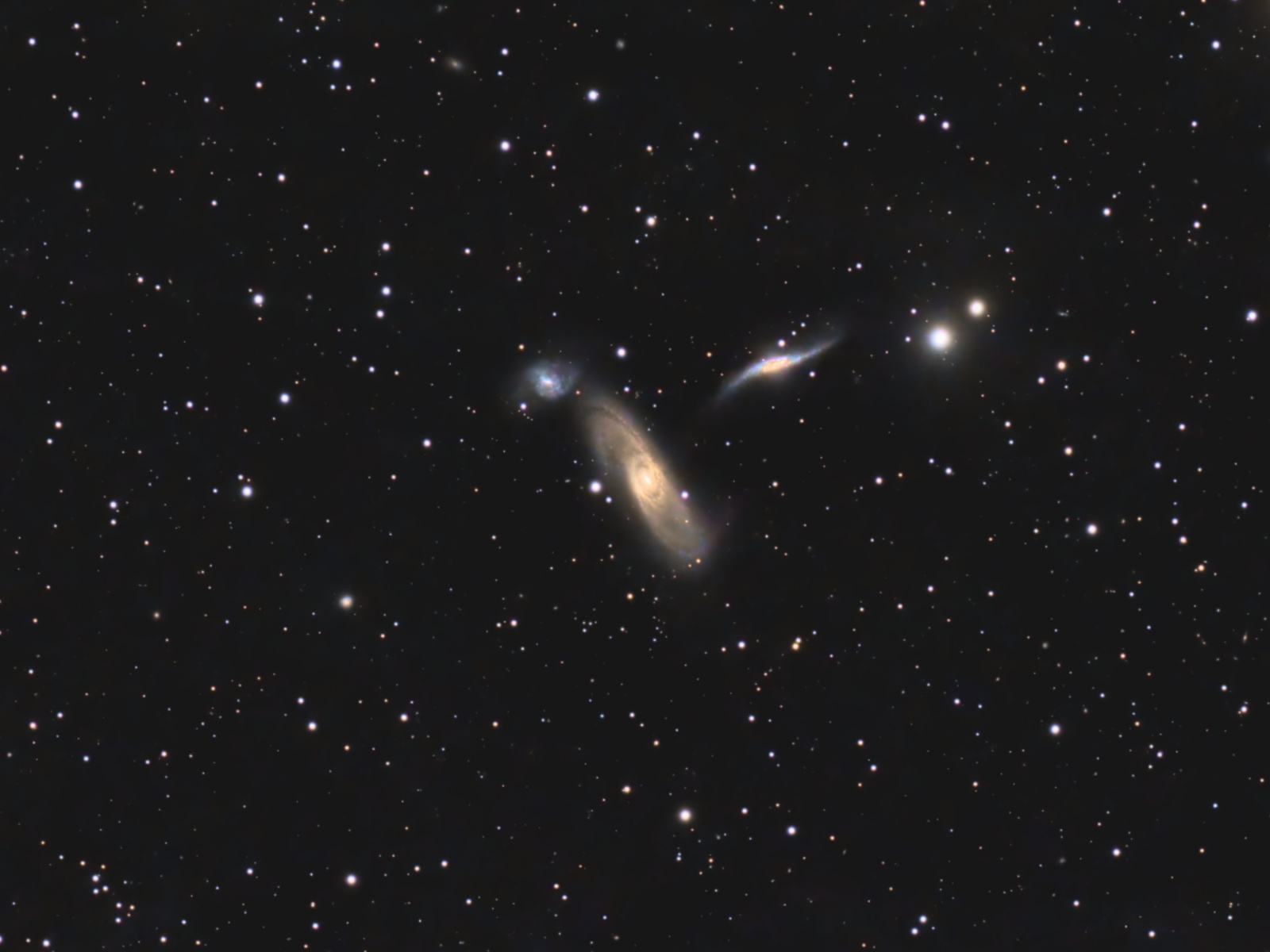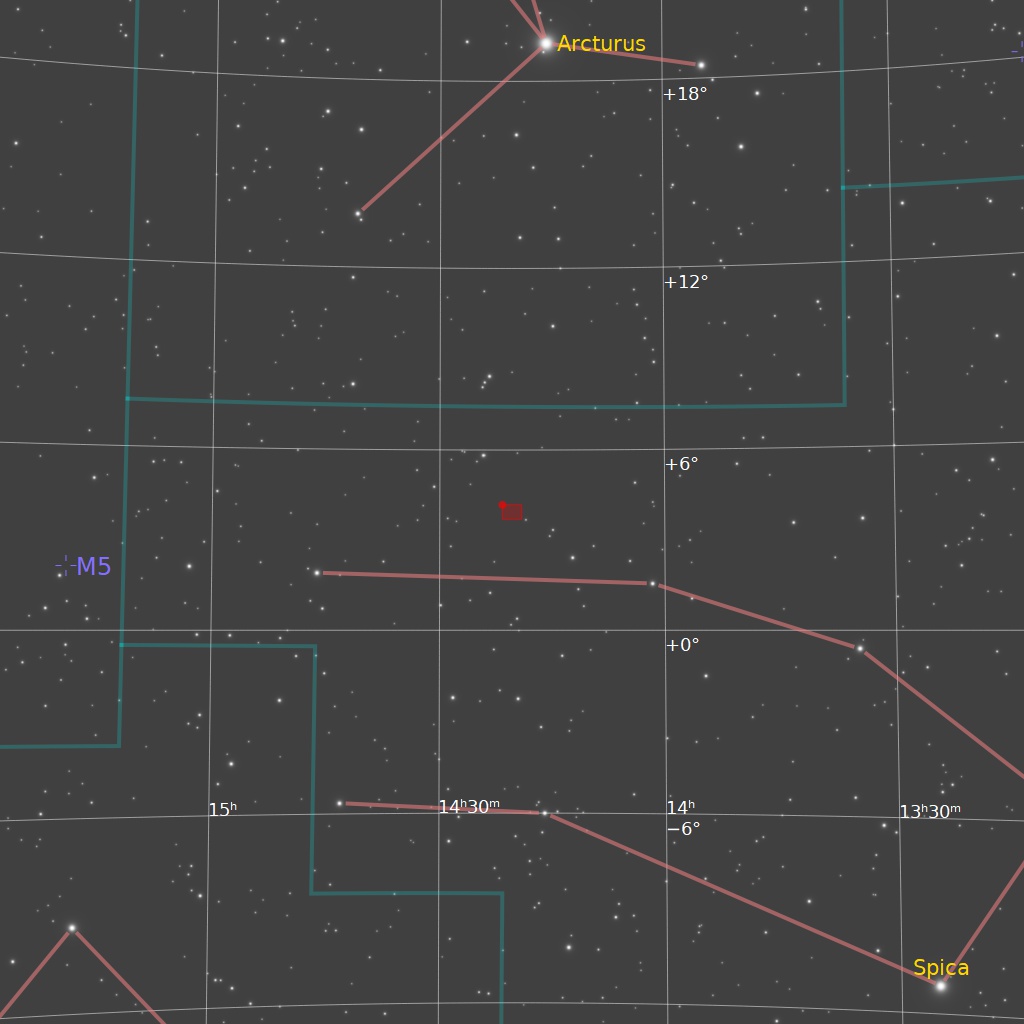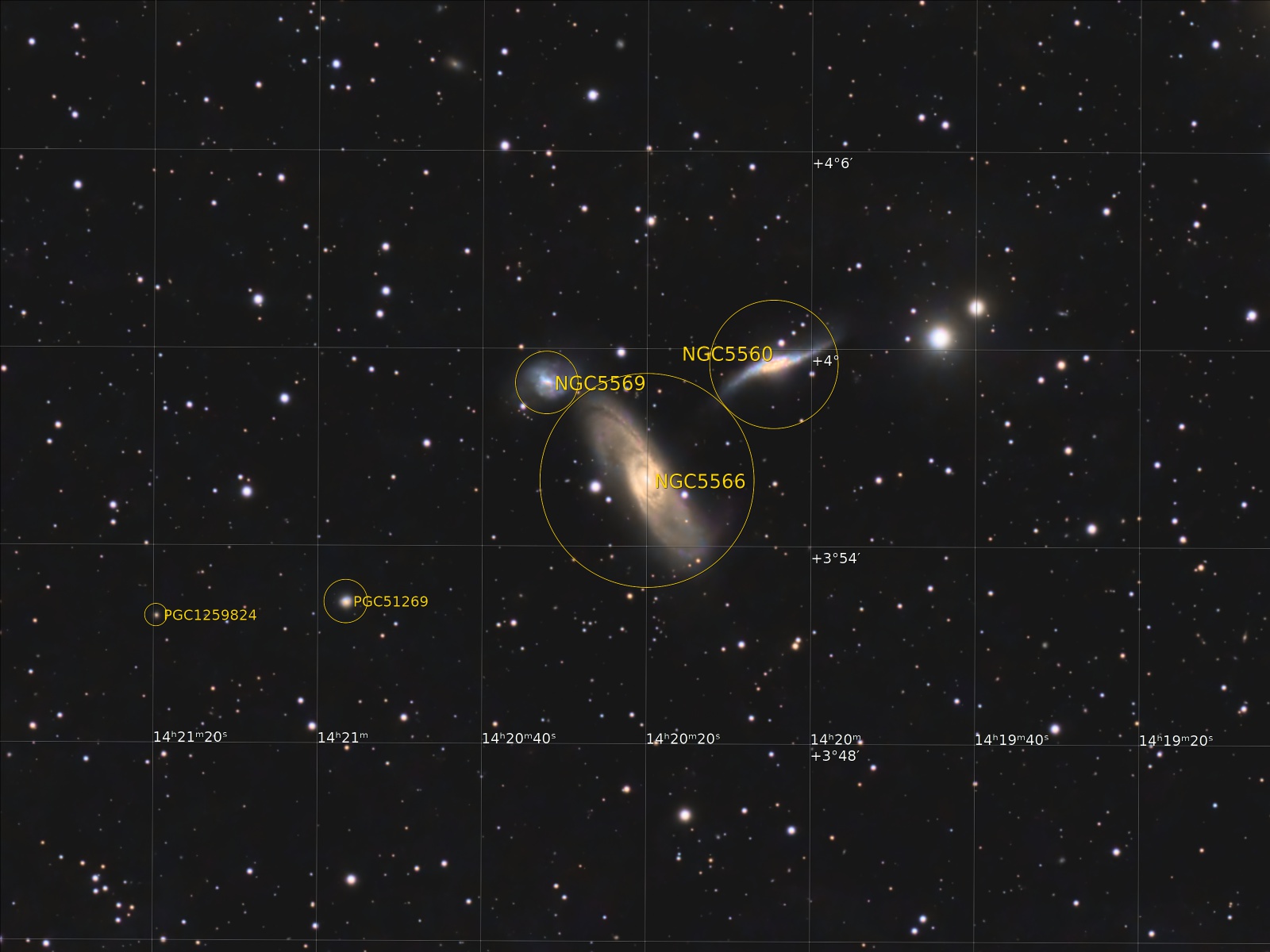Arp 286 Galaxy Group
 Click image for full size version
Click image for full size version
July 5, 2022
The trio of galaxies shown here is classified as Arp 286, in Halton Arp’s Atlas of Peculiar Galaxies. Yellowish barred spiral galaxy NGC 5566 is at centre, flanked by, and interacting with, spindly NGC 5560 and oval NGC 5569. Several other smaller galaxies dot the field. I prepared an annotated image that identifies them. NGC 5566 is the largest galaxy in the Virgo Galaxy Cluster, measuring more than 150,000 light years across. It’s about 65 million light years from us. These three galaxies are interacting with each other.
Tekkies:
Acquisition, focusing, and control of Paramount MX mount with N.I.N.A., and TheSkyX. Focus with Optec DirectSync motors and controller. Equipment control with PrimaLuce Labs Eagle 4 Pro computer. All pre-processing and processing in PixInsight. Acquired from my SkyShed in Guelph. Very good transparency and average seeing. Acquired May 24-June 3, 2022 under a moon-free sky.
Sky-Watcher Esprit 150 f/7 refractor and QHY600M camera with Optolong UV/IR filter
105x5m OSC = 8hr45m
The WeightedBatchPreProcessing script was used to perform calibration, cosmetic correction, weighting, registration, local normalization and integration of all frames.
DrizzleIntegration was applied to the OSC frames, and the result was aligned to the Luminance master with StarAlignment. This yielded aligned Lum and Colour masters.
DynamicBackgroundExtraction was applied to the luminance and OSC masters.
Colour
Colour Calibration: PhotometricColorCalibration was used to calibrate the OSC master.
Linear Noise Reduction: NoiseXterminator was used to reduce noise in the background areas with settings Amount=0.9 and Detail=0.15
Stretching: HistogramTransformation was applied to make a pleasing yet bright image.
Luminance
Deconvolution: A star mask was made from the Luminance master to use as a Local Deringing Support Image. A stretched clone of the H-alpha image was used to make a mask selecting bright regions of the nebula for deconvolution. Deconvolution was applied (30 iterations, regularized Richardson-Lucy, ParametricPSF mode with default settings; Global dark deringing = 0.02; Global bright deringing 0.007).
Linear Noise Reduction: NoiseXterminator was used to reduce noise in the background areas with settings Amount=0.9 and Detail=0.25
Stretching: HistogramTransformation was applied to make a pleasing yet bright image.
Combining Luminance and Color Images
Luminance addition: LRGBCombination was applied to replace the lightness of the RGB image with the Luminance master.
Additional Processing
Star Removal: StarNet v2 was used to remove stars.
Nonlinear Noise Reduction: NoiseXterminator was used to reduce noise in the background areas of each image with settings Amount=0.9 and Detail=0.25
Contrast Enhancement: LocalHistogramEqualization was applied using an inverted lightness mask to protect the background and select the nebula. Three passes were applied (scale 20, max contrast 1.5, strength 0.5, 1 iteration; scale 80, max contrast 1.5, strength 0.4, 1 iteration; and scale 150, max contrast 1.5, strength 0.18).
Sharpening: MultiscaleMedianTransform was used to sharpen Layers 2 – 4 with strengths of 0.07, 0.05 and0.03, respectively.
Star Restoration: Stars removed using StarNet2 above were added back into the image using straight addition in PixelMath.
Final Steps: Background, galaxy and star brightness, contrast and saturation were adjusted in several iterations using CurvesTransformation with masks as required. MorphologicalTransformation was used in Morphological Selection mode to slightly reduce the size of stars. ICCProfileTransformation (sRGB IEC61966-2.1; Relative Colorimetric with black point compensation) was applied prior to saving as a jpg.








Beautiful Shots Dearest Ron – Just Fabulous- Thank You so much